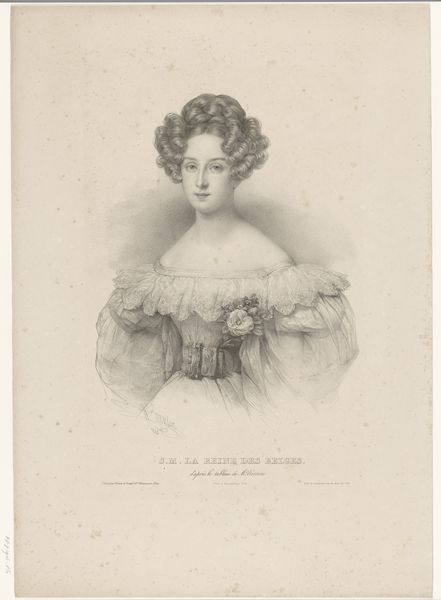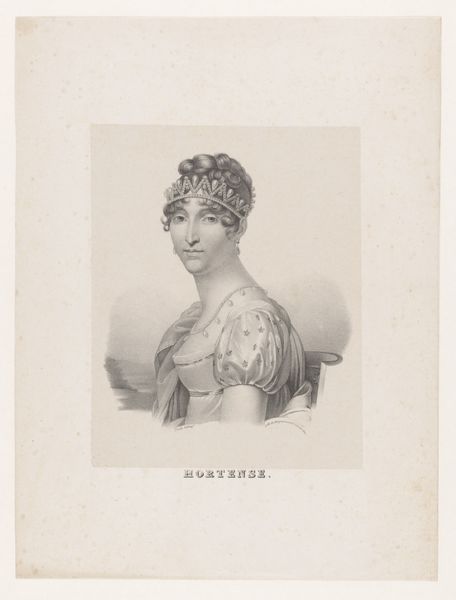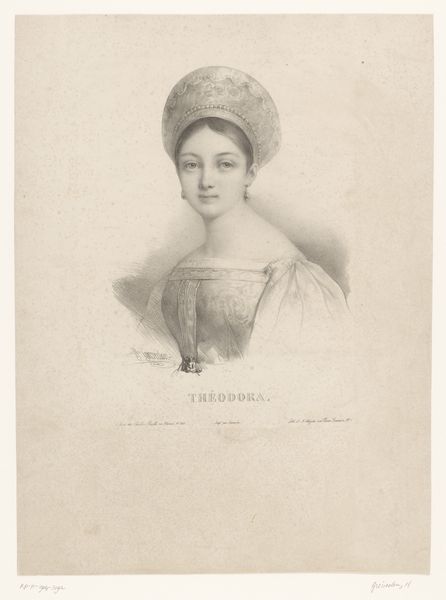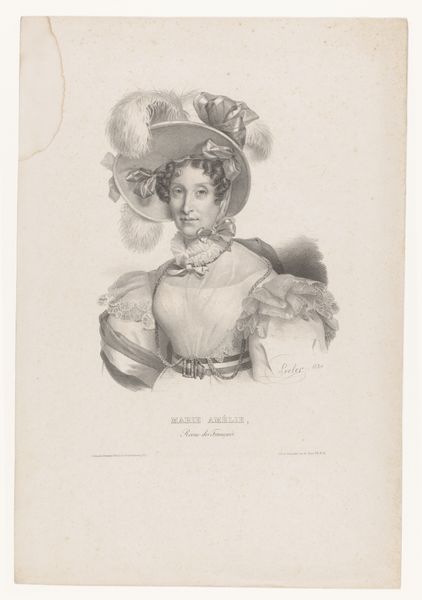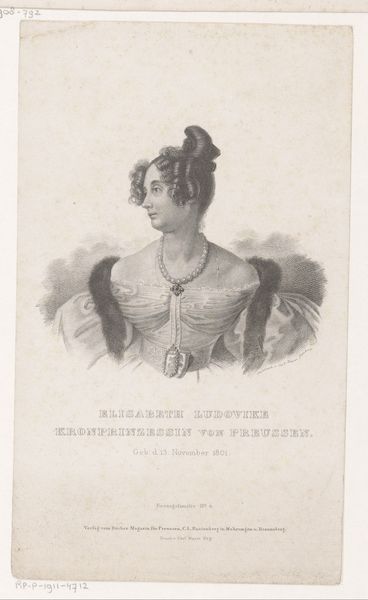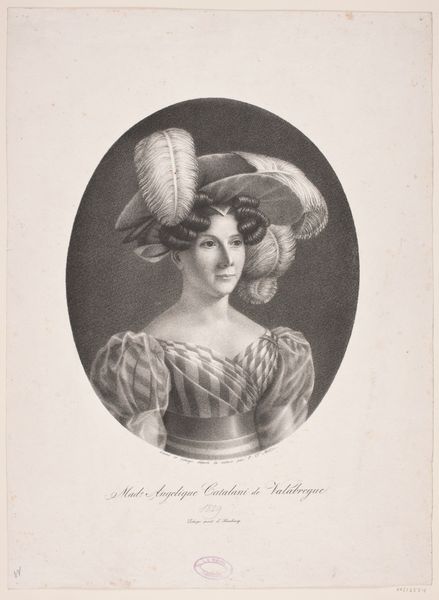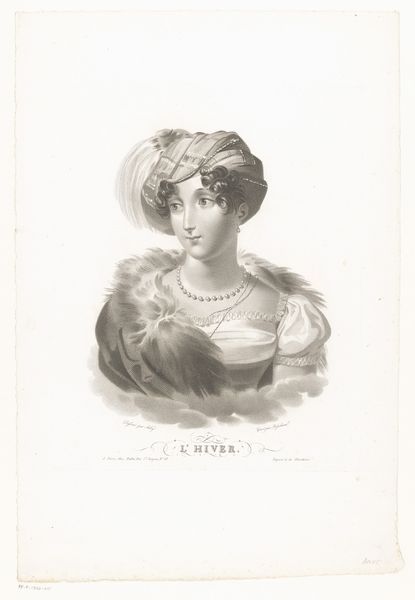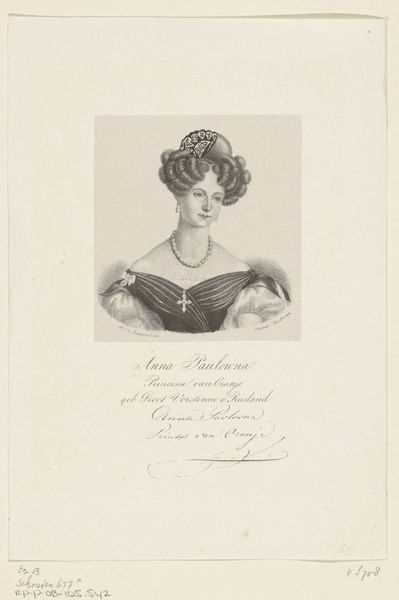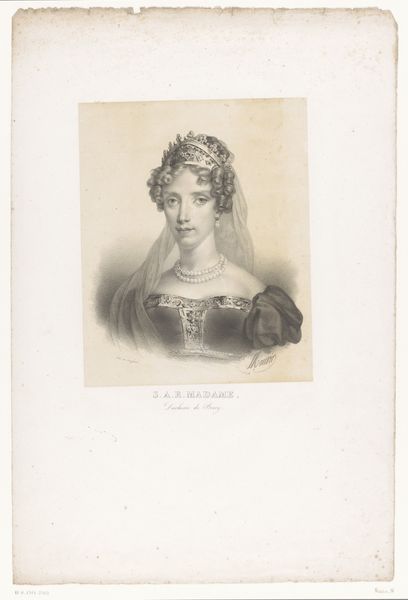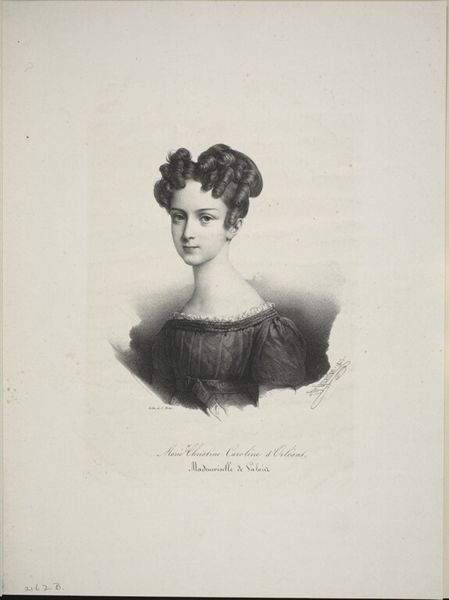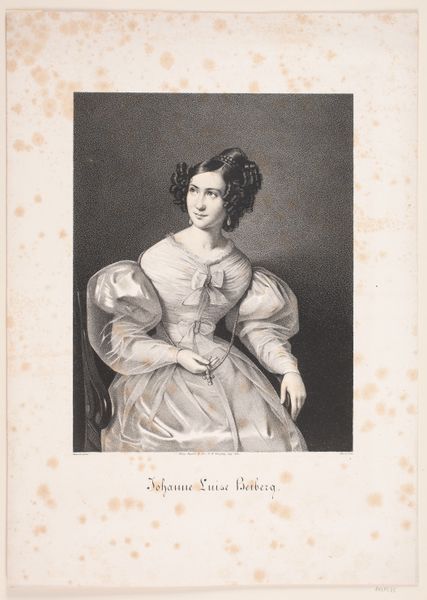
print, engraving
#
portrait
#
pencil drawn
#
still-life-photography
# print
#
old engraving style
#
charcoal drawing
#
pencil drawing
#
romanticism
#
engraving
Dimensions: height 293 mm, width 226 mm
Copyright: Rijks Museum: Open Domain
Curator: Let's discuss this print, “Portret van Marion Delorme,” a work created around 1832 by Bernard Romain Julien, currently held in the Rijksmuseum. It's an engraving, a portrait of a woman who seems quite self-possessed. Editor: Ooh, yes, she has that "I know something you don't" look. There’s almost a playful darkness in her eyes. And the feathers in her hair, like she's ready to either fly or... maybe to judge. There is a gothic touch in this piece! Curator: Marion Delorme herself was a fascinating figure. A courtesan and salonnière in 17th-century Paris. This print, created much later, capitalizes on her historical persona and the romanticized narratives surrounding women of her station during the Romantic period. It’s important to note the gaze – how the portrait serves to construct ideas around female beauty and power dynamics during that time. Editor: Right! There's this amazing tension between vulnerability and power. It's there in the soft lines of her face, but also in the sharp angles of her dress. Is she in control of her narrative, or is the artist imposing it on her, and furthermore us interpreting it? Curator: It really pushes you to think about who is controlling the narrative, and whose gaze we're really seeing. The engraving medium itself contributes to this tension—the precision lends itself to realism, yet the medium also distances us from the immediacy of a painted portrait. Editor: You know what I love most? It's the hair. All those intricate curls, like a storm frozen in place. You feel as if you could almost smell her perfume in this charcoal dust. Curator: Well said. By situating Delorme in the context of the Romantic movement, it invites dialogue regarding women and representation in popular culture. This approach makes this artwork far from a still object, as we uncover our contemporary discourse regarding agency in art. Editor: I know! Thinking about her beyond just a pretty face makes you realize, it’s an interesting reflection. Definitely a piece that holds up a mirror. It’s almost daring, isn’t it?
Comments
No comments
Be the first to comment and join the conversation on the ultimate creative platform.
